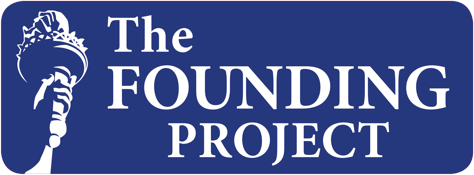
What is the Debt Ceiling Limit?
The debt ceiling is a limit imposed by Congress on how much debt the federal government can carry at any given time.
When the debt ceiling is reached, the US Treasury cannot issue anymore treasury bills, bonds or notes. It can only pay bills as it receives tax revenues.
In other words, each time the debt ceiling is increased, it essentially allows the federal government to pay bills above its means.
Average Citizen Comparison
We can compare this practice to a personal credit card issued by a bank in your name. At issue, you were given a credit limit of $3,000.00 with an interest rate of 21% per year. That limit is like the debt ceiling.
Then, you max out your credit limit of $3,000.00 and request an increase from the issuing bank. This is similar to Congress voting to increase the debt ceiling, when government spending has increased more than the government spending limit or debt ceiling.
The Difference
Of course, the bank will deny you a credit increase for your credit card, because the bank issuing the credit card would expect you to repay the first $3,000.00 in debt you’ve already charged on your credit card. But, the bank may review your request at a later date, after your credit card is paid in full.
For you, your bank can impose a limit on your spending, based on your income and your demonstration that you can and will pay your debt. For the government, there is no bank to refuse the increase in spending. Congress is the only guardian of the government spending and can simply vote to allow more spending and increase the government debt.
For you, besides repaying the $3,000.00 that you charged on your credit card, you will also pay a hefty interest rate for the privilege of using that card. Similarly, the U.S. government pays a hefty interest rate for the large debt it carries.
Your Interest, Government Interest
For your credit card, the interest paid on the money you owe is set by the bank issuing the credit card with the interest charged communicated to you in your monthly bills. You owe that interest amount to your bank. Typically, you need to pay at least the interest owed on any credit card balance you owe and, if you cannot pay off the entire balance, the amount owed and the interest owed continues to cause your debt to grow quickly.
For the government, they owe money spent to a variety of lenders, including foreign countries, the social security funds, and also taxpayers. Currently, the U.S. national debt is over $20 trillion and, according to Bloomberg, paper is trading at around 1.096%, which is the approximate average interest rate for US debt right now.
In September 2017, the US paid over $23 Billion in interest charges alone on its debt. If this was your credit card, you would need to make a minimal payment of at least $23 Billion to be able to continue to use your credit card, IF you had not already maxed out your spending limit.
U. S. Debt Types
While an average citizen has limits imposed on its debt based on your income and amount you spent or, for a mortgage, based on your income and the value of your home and amount borrowed, the government has more options, which it has created for itself.
The US debt consists of two types of debt: 1- public (debt that is owed to others) and 2- what the government owes to itself.
Most of the self-owing debt is comprised of money the government owes to the Social Security Trust Fund and federal employee retirement funds.
But, seventy percent (70%) of the US total debt is public debt or debt owed to other entities.
When Government Exceeds Their Spending Limits
 In September 2017, the president and Congress agreed to raise the debt limit to carry the government through until December 8. That is, the government had again exceeded their former debt limit and either had to limit spending to only what could be paid with tax revenue or collected taxes or increase the debt ceiling. This means Congress had to approve a new debt ceiling and had to create a new budget by that date.
In September 2017, the president and Congress agreed to raise the debt limit to carry the government through until December 8. That is, the government had again exceeded their former debt limit and either had to limit spending to only what could be paid with tax revenue or collected taxes or increase the debt ceiling. This means Congress had to approve a new debt ceiling and had to create a new budget by that date.
We can all remember when Congress failed to raise the debt ceiling in October 2013 and let the government “shut down.” This affected me personally as I was in the process of selling my home. The buyers were approved for a government financed homeowner’s loan, however, all government loans were stalled and it took 4 months to close this loan.
Limited Only by the Debt Ceiling
Citizens set your personal budgets based on your income and can decide if you want to borrow money to pay for any needs that exceed your income. But, your ability to borrow is limited to what your lender(s) will allow, based on your income. Government does not have quite the same limits or is limited only by the “debt ceiling” imposed by Congress. Currently, government spending exceeds the incomes of ALL of its citizens, combined, or spends more money than all of its citizens earn each year, so it must borrow money if it continues to exceed its revenue (government income).
Decades ago, Congress created the laws that make it legal for the federal government to borrow money at these high levels, as long as it does not exceed the debt ceiling set by Congress. Government spending kept at or below the debt ceiling level can be continued until spending exceeds the debt ceiling limit, which means government cannot meet the payroll (pay employees) or pay for government purchases and that government cannot borrow more money…unless Congress raises the debt ceiling.
Creating the Debt Ceiling
The debt ceiling was first put into law 100 years ago, the year the U.S. entered into World War I. The United States needed to borrow funds to be able to afford this war and a means to acquire debt in excess of taxes collected was needed.
The debt ceiling was revised in 1939 on the eve of World War II to combine separate debt limits into one and allow the United States to borrow to meet its needs during this time.
And, the debt ceiling has been with us ever since, with Congress voting to make the limit higher each time we come close to reaching its limit.
Doesn’t Limit Spending, Just Limits Debt
As previously mentioned, in the comparison to your personal credit card, the debt ceiling allows the US to borrow money to pay its bills or “live above its means.”
So, if Congress refuses to raise the debt ceiling limit, does that mean it must stop spending? No, not raising the debt ceiling limit is like not paying your credit card bill. You can still spend, but you cannot borrow any more money from your credit card.
“Effectively the debt ceiling is not specifically a limitation on our spending. It’s just a limitation on the amount of outstanding debt we have,” stated the director of fiscal policy at the Bipartisan Policy Center.
What If?
What would it look like if the government reached its borrowing limit and the debt ceiling was not raised?
No one really knows for sure. While citizens could not financially survive spending and borrowing beyond its means for extended time periods without negative consequences. Most governments cannot either. But, the U.S. has a very large economy and has managed to pay at least minimal payments on the debt it owes to others.
The level of U.S. spending and borrowing above its national income and national GDP is unique and unprecedented. We can’t know what exactly would transpire if the government went down that path of not having the capacity to pay its bills.
Is It Never-ending Debt?
One clear issue is this: If the U.S. could no longer borrow, the government could have to stop paying lots of money to lots of entities (foreign and at home). Some money would still be coming into the government in the form of tax revenue, but not enough to pay all the government’s obligations (debt, bills). Even if citizens were taxed at 100% (or had all of their income taken from them), government spending could not be covered.
If the debt ceiling was not raised, another fear is that the inability to borrow would make the U.S. unable to pay its minimal payments on its debt, which would lower worldwide confidence in the U.S. That loss of confidence could result in unwillingness to lend the U.S. more money, devaluing of the U.S. dollar and even the loss of the U.S. dollar as a World Currency, a beneficial status the U.S. currently holds.
By Chris Watkins, The Founding Project Accountant
Sources: US Treasury, NY Times, CNN Money, The Washington Post
About this Author:
Chris Watkins ~ Chris is the accountant for The Founding Project and when TFP isn’t keeping her challenged, her accounting practice has her more than busy. Chris studied accounting at the University of North Texas, Denton, TX and has over 35 years in the accounting field working in various industries with 13 of those years in public accounting. She lends her accountant’s perspective to this article for TFP’s website. Look for more from Chris in upcoming articles.

Leave a Reply